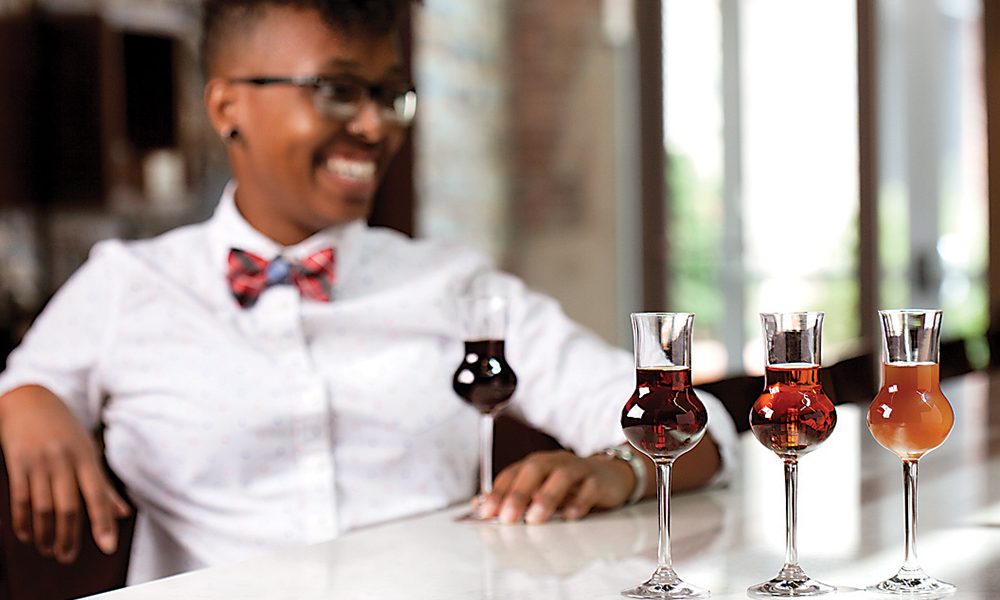Food & Drink
That’s Amaro!
The popular Italian liqueur is enjoying its moment in the sun.
Most drinkers like to pair pastas with a nice red wine, but at restaurants and bars all over town, a new Italian star is on the rise: amaro. Meaning “bitter” in Italian, this herbal liqueur is commonly quaffed as an after-dinner digestif, but it’s also showing up in flights and cocktails at places like W.C. Harlan, Aggio, Gnocco, and Cosima. We talked to Cosima’s beverage director, Kristen Starks about the rise of amaro.
What was your first introduction to amaro?
When I started working at Cosima, we sat down and based our bar program on the food, and amaro seemed like a really great start, since we serve southern Italian cuisine. They gave me room to play—I did a lot of research and found different amari. I was stunned at how complex they were, and I became obsessed with it.
What do you tell customers who haven’t tried it before?
I usually say that it’s a botanical liqueur that is made with roots, bark, citrus peel, and flowers. It started off being used medicinally in the 19th century and is now commonly [enjoyed] after dinner. I try not to start them off with the crazy stuff. When describing the flavor, I use words like potpourri, coffee, and cola, because all of those flavors come through.
Can you talk about some of your favorite amaro varieties?
I really like Montenegro, which is a pretty traditional amaro based out of Bologna. I like the citrus flavor, with some baking spices in there. I offer it to people after dinner and pair it with our cannoli because we have candied orange in the filling and it’s just so good together. I also like Lucano. For people who haven’t had it before, it’s a nice introduction—you can have it with a bit of ginger beer and lime juice. It’s really refreshing.
While it’s ideal for after dinner, you also make great amaro cocktails, right?
Yes, it’s great in cocktails. We have one called Citta Vuota with Dell’Erborista amaro, which has hints of grapefruit peel, cinchona bark, and honey. I pair it with rhubarb tea, honey, Barr Hill gin, grapefruit juice, and a splash of Prosecco.
Why do you think amaro has really taken off in Baltimore?
Its intrigue is part of its appeal. Plus, amaro has a lot of versatility and has a broader spectrum than a lot of liqueurs, so everyone is bound to like one variety or another.
